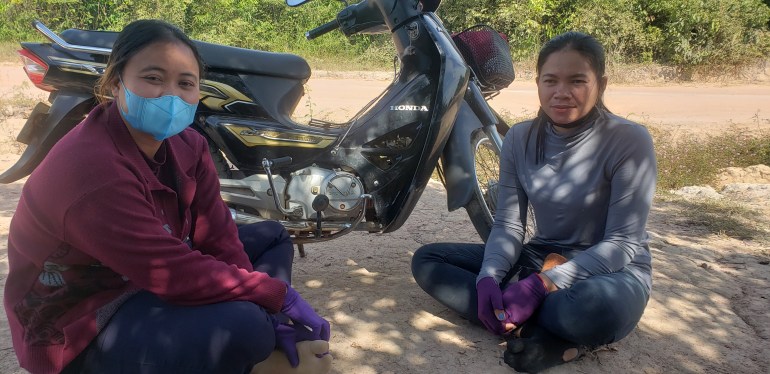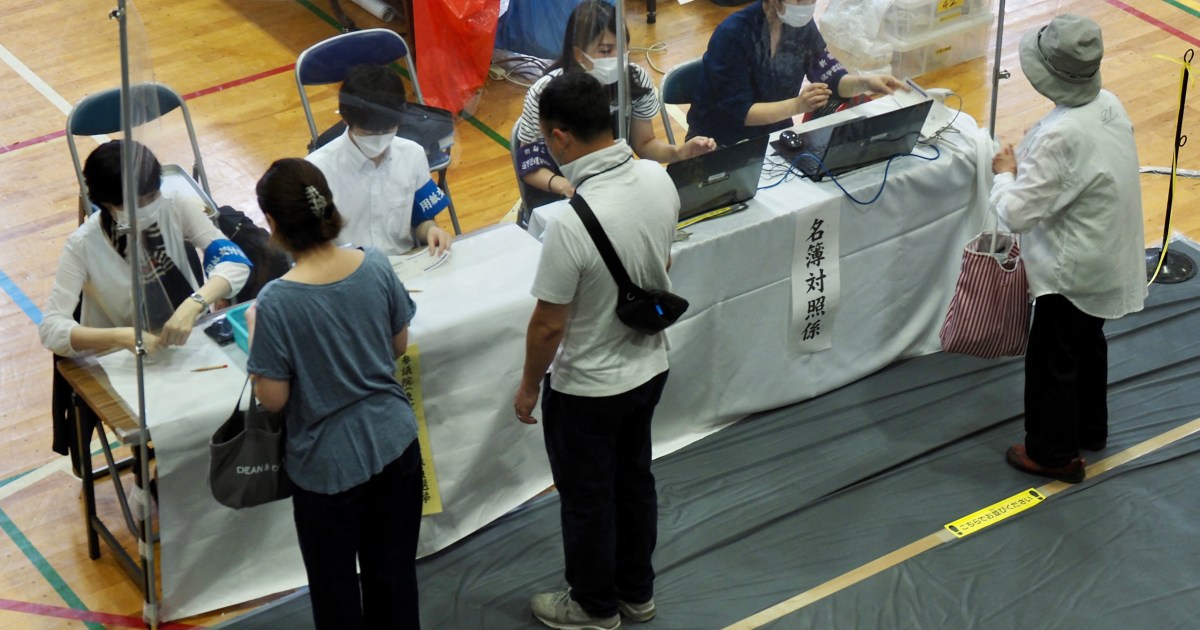In Cambodia’s Siem Reap, $990m airport faces hurdles to success | Coronavirus pandemic
Siem Reap, Cambodia – Down a dirt road in Cambodia’s Siem Reap province, behind homes and a few sundry shops, construction teams are busy working to transform an empty rice field into an international airport capable of handling 10 million travellers by 2030.
The Cambodian government has touted the Chinese-developed Angkor International Airport project as a boon for the province’s tourism industry, which was suffering from declining numbers of visitors even before the COVID-19 pandemic.
Authorities have also promoted the $900m airport, located about 50km (31 miles) from Siem Reap city, as a way of protecting the world-famous tourist attraction Angkor Wat, which suffers from noise pollution caused by the existing airport nearby.
The project’s developer has promised to build a highway and commercial complex in addition to the airport, as part of a push to attract millions of visitors to the region each year.
The ambitious plan, however, faces an array of significant obstacles, from broken contracts to an uncertain post-pandemic recovery.
Though construction was slowed by pandemic-related logistics issues, Sinn Chanserey Vutha, spokesperson for Cambodia’s Civil Aviation Secretariat, said the firm Angkor International Airport Investment was aiming to start airport operations by March 2023, with imminent plans to bring in a team to carry out advanced construction work and begin the transition away from the province’s old airport.
“The Chinese [teams] are huge, the Chinese have a lot of resources, they’re trying to add a lot of resources to the site,” Chanserey Vutha told Al Jazeera.
Angkor International Airport Investment could not be reached for comment, but Chinese state-owned Yunnan Investment Group, which is backing the investment, in December urged its Cambodia-based counterparts to speed up the construction and meet the deadline to open the runway by March 2023.
Broken contracts
The Cambodian government allocated 700 hectares (1730 acres) for Yunnan Investment Group’s $880m airport plan in 2018, after earlier promising another company exclusive rights to operate the airport until 2040.
Cambodia Airports, a consortium that runs the airports in Cambodia, is 70 percent-owned by France’s Vinci Airports and 30 percent-owned by Cambodian-Malaysian company Muhibbah Masteron. It lost control of the existing airports in Siem Reap and Phnom Penh after the Cambodian government announced plans to build two new airports.
The Vinci Group spent 100 million euros ($112.62m) on contract obligations for the existing airports in 2020 and the first half of 2021, according to its 2021 mid-year report. Chanserey Vutha said the three Vinci-controlled airports in Phnom Penh, Sihanoukville, and Siem Reap had separate operating terms.
The Siem Reap contract obliged the government to compensate Cambodia Airports for axing the deal, with a task force established to negotiate a payout for the existing airport’s closure in the coming weeks.
The Phnom Penh airport, which is being constructed by local firm Overseas Cambodia Investment Company, with financing from the China Development Bank, doesn’t have the same clause allowing another operator to step in before the end of the existing contract and so will be more complicated to negotiate, Chanserey Vutha said.
Asked about negotiations over ending the contracts for the Siem Reap and Phnom Penh airports, Cambodia Airports communications director Norinda Khek did not directly comment on the new airport projects.
“We engage on many issues with Cambodian authorities and current key discussions with them focus on how to re-attract international visitors to the country and promote Cambodia as a safe destination after more than two and a half years of a uniquely challenging situation due to the COVID-19 pandemic,” Khek told Al Jazeera.
 Kaut Yi and Lam Peat have complained of problems with pay while working at the site of the new airport under construction in Siem Reap [Courtesy of Danielle Keeton-Olsen]
Kaut Yi and Lam Peat have complained of problems with pay while working at the site of the new airport under construction in Siem Reap [Courtesy of Danielle Keeton-Olsen]Other Chinese state and private investment projects in Cambodia – including a luxury resort and airport project by the Chinese company Union Development Group in Koh Kong province – have been flagged by US officials and think-tanks for allegedly mistreating locals or having secret geopolitical or military purposes.
Last year, a report by the New York-based Asia Society Policy Institute noted that communities living on the land repurposed for the new Siem Reap airport had been offered compensation, but the amounts were low and residents had no option to stay put. The Chinese embassy met with local NGOs over the project — which hadn’t happened in many other Chinese-funded projects — but embassy officials claimed developers were “reactive” in sharing information, only posting banners after residents asked, according to the report.
Kaut Yi, who works as a cleaner at the airport construction site, told Al Jazeera she was considering forming a union because of past issues with receiving timely pay and poor conditions that include having to live in heavily guarded, crowded shacks without air conditioning.
“The reason we want to start a union is that we want the union to help us in case we get exploited,” Yi said.
Lam Peat, another worker at the site, told Al Jazeera it was unfair that she made $8 per day while her male colleagues earned $10.
“We do the same tasks as they do, but we get different pay,” Lam said.
Despite lofty predictions by the government, Chanserey Vutha, the Civil Aviation Secretariat official, said it was unlikely flights would return to pre-pandemic levels by the airport’s scheduled opening next year.
Even before the pandemic, flights to Siem Reap were down 12.3 percent in 2019, compared with the previous year. In 2020, the World Bank warned the city’s temples may no longer be sufficient to draw tourists without more offerings in the city.
‘Contingency plan’
When Yunnan Investment Group promised to invest in the airport in 2017, local authorities expected air traffic to rise, Chanserey Vutha said, adding his department originally projected a 12 percent increase in passengers to Siem Reap even after arrivals plunged in 2019.
“But now due to the pandemic, everything changes, so they have to prepare the contingency plan.”
Brendan Sobie, an independent aviation analyst in Singapore, said he was optimistic about the airport’s 2030 target of 30 million passengers, noting the old airport had netted 4.5 million passengers in 2018.
But the airport’s future would depend heavily on China, Sobie said, which has halted most flights under a strict “Zero Covid” policy. Before the pandemic, the city’s existing airport connected to two dozen locations in China.
Sobie said Siem Reap would need to diversify as a destination to pique the interest of more carriers, especially from other nations.
“No one knows when outbound China will reopen and when this happens, whether Siem Reap or Cambodia overall will be as popular with Chinese travellers as they were before the pandemic,” he said.
Additional reporting by Yon Sineat




